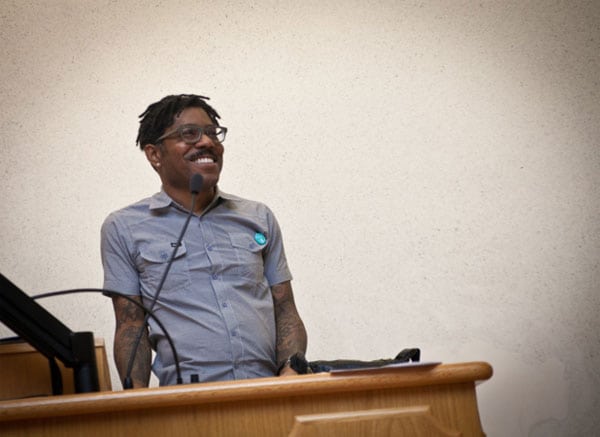
August 7, 2018, Co-op News
“We’re at the beginning of this major growth curve of worker ownership and worker co-ops becoming much more mainstream,” notes Esteban Kelly, executive director of the US Federation of Worker Cooperatives (USFWC), in an interview with Rebecca Harvey of the British publication Co-op News. USFWC, notes Harvey, has around 200 members, most of whom are worker co-ops or democratic workplaces
Kelly estimates that over the last decade the number of US co-ops has increased from about 350 to about 600. That increase has occurred primarily in communities of color, especially immigrant communities, and has made the sector as a whole more racially diverse. According to Kelly, about 40 percent of current USFWC members are white, about 42 percent are Latinx, about 12 percent Black, and about 6 percent Asian American or American Indian.
What is behind the growth of the sector? Kelly credits a few factors:
- Great Recession: The 2008 financial crisis was a big catalyst. “When the collapse happened, there was suddenly a hunger for another way to do things,” notes Kelly.
- Media: Kelly cites Michael Moore’s documentary Capitalism: A Love Story (2009), which profiled worker co-ops, including some of USFWC’s members, as one of a number of media efforts that increased the profile of worker cooperatives.
- Activism: Occupy Wall Street helped launch new discussion about worker co-ops.
- International Visibility: 2012 was the United Nations-designated International Year of Cooperatives, which raised co-op visibility.
- Local Politics: In 2014, Bill de Blasio was elected mayor of New York City. “Newly appointed staff, some of whom were friends of friends of friends of USFWC, were saying ‘I’m in a position of power, what can I do that would be helpful?’,” Kelly recalls.
Support in New York City “was a game changer as more funding avenues opened up, with dollars flowing into an ecosystem that supports, incubates, trains and further develops worker co-ops,” notes Kelly. “We’re getting $3.8 million this financial year. Our local chapter in New York has a bigger budget than we do because they’re able to tap into that funding… Now we believe there are about 80 co-ops in NYC alone. When this all started, there were about 12.” New York City has also spawned imitators. A recent USFWC report, for example, also lists Berkeley and Oakland, California; Austin, Texas; Jackson, Mississippi: Madison and Milwaukee, Wisconsin; Cleveland, Ohio; Minneapolis, Minnesota; Boston, Massachusetts; and Philadelphia, Pennsylvania as cities that, in one form or another, are pursuing “municipal [worker] co-op initiatives.”
Kelly also emphasizes the importance of storytelling and narratives to build support for worker cooperatives. As Kelly explains,
Sign up for our free newsletters
Subscribe to NPQ's newsletters to have our top stories delivered directly to your inbox.
By signing up, you agree to our privacy policy and terms of use, and to receive messages from NPQ and our partners.
[There’s a] myth that co-operatives are all alternative, leftist and progressive – sure they might be, and many of them certainly are – but they’re also not exclusively that.
It’s important to also share the stories of co-ops which, for example, manage to stabilize rural communities that have fewer economic opportunities, like where some guy sells his hardware store to the workers and it becomes a worker co-op – now you have a rural co-operative in a conservative area where you have worker owners who feel empowered. They’re excited about it, so they tell the story themselves.
Kelly also highlights the importance of moving away from messages like “we’re all well-educated white radicals” and instead emphasizing racial equity themes, such as, “we’re Black-run businesses” and “we’re immigrant-run businesses.”
It’s also important to “be able to include a counter-narrative,” explains Kelly. Part of this means embracing the diversity of the movement. “We’re dealing with a very diverse sector,” notes Kelly. “We’ve got everyone from engineers that are making car parts for Tesla, to immigrant workers who are cleaning homes, or driving taxis or landscaping. And, of course, everything in between; it really runs the full gamut. So how do you tell that story? Well, the answer is that it’s not one story.”
Kelly concludes: “I think we need that nimbleness to help people expand the frame of what they think of as cooperatives.”—Steve Dubb











